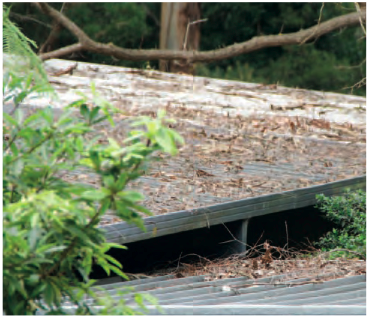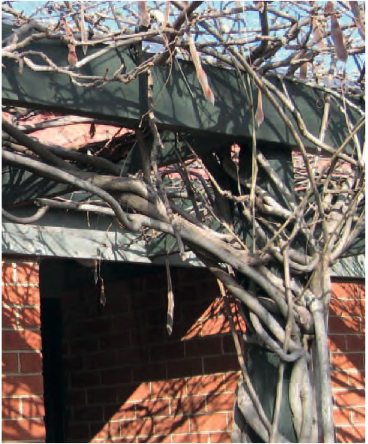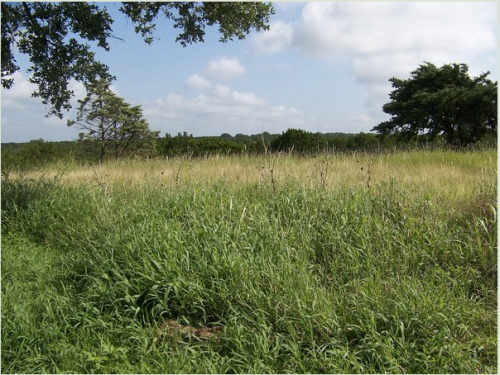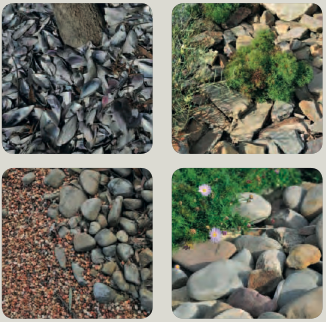Having a well kept garden full of Australia’s beautiful indigenous plants are a necessity for all those who love the Australian bush. However, it’s vitally important you understand the dangers your garden could bring to your home in the event of a bushfire. Homes are lost in bushfires when embers carried by the wind from the fire land on or near the house and ignite flammable objects nearby. That’s why it’s always a good idea to make sure your gardens and other vegetation around the home aren’t going to burn your home down! Here’s three easy tips to check if your garden is bushfire safe!
1. Trees and plants that drop a lot of leaf litter should not come in to contact with your home. If they fall close to your home – they should be regularly raked and removed. Leaf litter left unattended will ignite to an ember and be carried by the wind towards your home.
2. Ladders and creepers are a beautiful way to make your home look more integrated with nature. But they’re also very dangerous in a bushfire. Essentially, they provide an abundance of fuel for the fire right where you don’t want a fire to be.
3. Continuous lines of plants and gardens that stretch from areas that are more susceptible to fire (the bush) should be broken up. They will literally act as a fuze between your home and the bushfire.
4. Make sure your any grass lawns around the home are kept below 5 centimetres in length. Dry, long grass can easily ignite and spread fire around the home.
5. Although mulch is a great way to improve the quality of the soil, improve water efficiency and keep plants cool and moist in summer, it can also be very flammable when it dries out. There are plenty of other just as good alternatives that you could replace your mulch with. Gravel, scoria, pebbles, shells and recycled crushed bricks come in a variety of colours and shapes, so finding one that suits your garden should be easy!
Stay tuned for part 2 and some great tips to build a beautiful bushfire safe garden.
Leave a comment below with any questions, I would love to hear them!





Are you aware of the new CSIRO paper published in October about the importance of defensible space around houses. It has some good tips on preparing at the macro scale for bushfires. Unfortunately it costs $25 to get the full text (which is scandalous for a community-relevant publication that was prepared with Australian taxpayer money – if someone is willing to buy it I will make it available via my dropbox). The URL for the Abstract is http://www.publish.csiro.au/nid/114/paper/WF13158.htm, and here’s the key message in the Abstract:
“Although state and local governments publish specific guidelines and requirements, there is little empirical evidence to suggest how much vegetation modification is needed to provide significant benefits. We analysed the role of defensible space by mapping and measuring a suite of variables on modern pre-fire aerial photography for 1000 destroyed and 1000 surviving structures for all fires where homes burned from 2001 to 2010 in San Diego County, CA, USA. Structures were more likely to survive a fire with defensible space immediately adjacent to them. The most effective treatment distance varied between 5 and 20 m (16–58 ft) from the structure, but distances larger than 30 m (100 ft) did not provide additional protection, even for structures located on steep slopes. The most effective actions were reducing woody cover up to 40% immediately adjacent to structures and ensuring that vegetation does not overhang or touch the structure.”
Keep up the great work with the important information you are getting out via your website
LikeLiked by 1 person
Hi Gordon,
Firstly, thanks for reading! The purpose of this blog is to try and get this information out into the public sphere, as although it is readily available through a number of sources, it is often in large and quite complicated chunks of information.
I’m aware of the CSIRO paper, although like you I have only read the abstract. However, as a matter of fact these (limited) tips in my article are based around the ‘defendable space’ basic landscape management principles. Managing the vegetation around one’s home is now seen as the most effective way to protect your home from a bushfire/wildfire. Like it is said in the abstract for the CSIRO paper, vegetation within 5 – 20m from the home must be strictly maintained and intensively managed (in reality, you want no flammable materials within this area) – they refer to this area of the property as the inner zone. The outer zone (as is also mentioned above) is not as problematic, but should still be (loosely) maintained as materials ignited in this area could still carry embers toward the property.
I think the article you have mentioned is an American based publication – available through the CSIRO Australia. But if you’re interested in more, here’s an amazing paper published by the Country Fire Authority (CFA) in which I’ve tried to get the most important points out of (as it’s quite long, and I know people lose interest very quickly – hence only 5 tips). Share it with your friends and family, it’s incredibly useful. We’re only starting to rebuild our home since it was destroyed 2 years ago, and this article has been so useful in providing us the information to ensure this kind of tragedy (hopefully) won’t happen again.
Click to access landscaping_for_bushfire.pdf
LikeLike
I have to acknowledge an error in my previous comment – the CSIRO didn’t publish the paper. I was assuming that because the information was on the CSIRO website and they were selling copies, then it was done under a CSIRO program or the lead author was one of their researchers. Closer inspection doesn’t suggest any clear link to CSIRO. But I still believe that this kind of disaster-avoidance information should be in the public domain and not behind a paywall.
LikeLiked by 1 person
Pingback: Tips on bushfire preparedness | Sustainable @ Lockyer Valley